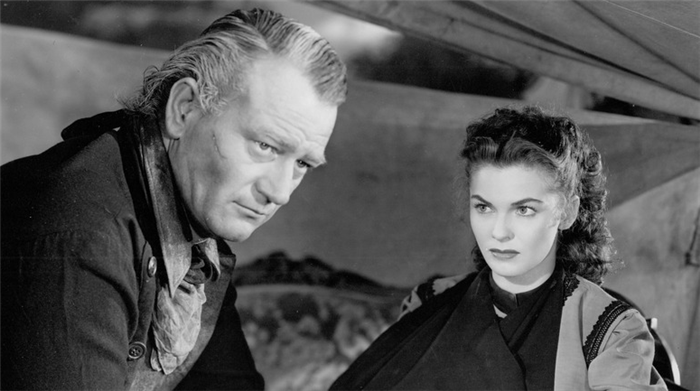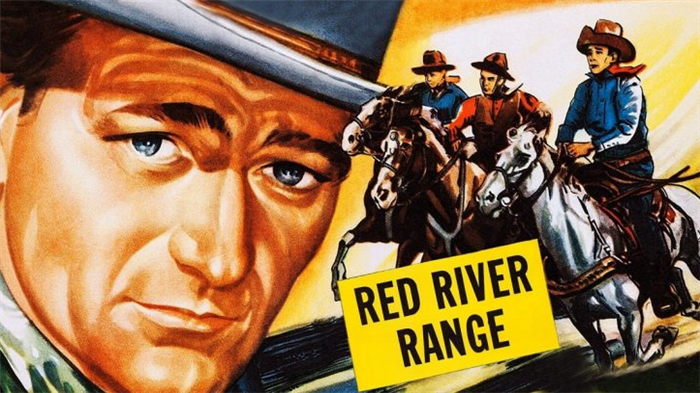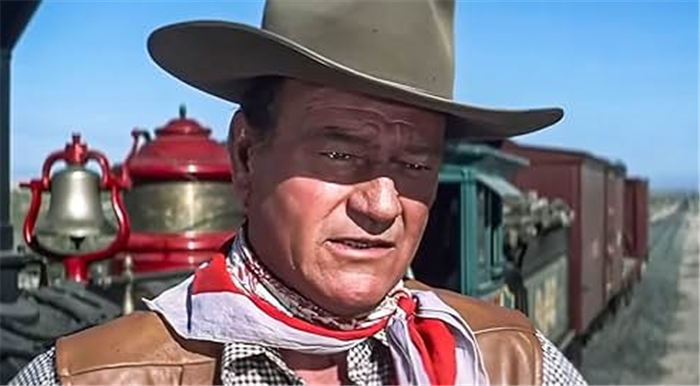What Makes John Wayne’s Performance So Powerful in ‘Red River’?
The complexity of John Wayne’s performance as Dunson echoes Humphrey Bogart in The Treasure of the Sierra Madre, which was actually released in the same year (it was a good time to be a Western fan). With the gradual reversal of his role from protagonist to antagonist (inversely mirrored by Matt, who progressively proves more of a hindrance to Dunson’s goal), this is one of the most defining examples of a character that actively subverts the paradigm of the unflappable Western hero.
Though he begins as a brave conquistador of the American West, his inability to listen to the wisdom of his younger subordinates reveals a deeply flawed and stubborn old man lost in his ways.
With tensions already high as a result of the grueling conditions Dunson insists his men endure, they reach their biggest pinch point when Dunson shoots three men who threaten to quit the drive. It’s an example of his tyrannical, authoritarian leadership that’s been exacerbated by the magnitude of his dream.
As established from a prior act of betrayal among the cattle ranchers, Matt proves unwilling to kill, while Dunson views killing as a necessary strength. It’s at this point that Matt rebels, leaving his adopted father symbolically castrated by separating him from his bulls and his economic ambitions (both symbols of masculine authority).

What Is ‘Red River’ Really About?
During the final confrontation between Matt and Dunson, Matt chooses to face Dunson without a gun (an established symbol of phallic pride), refusing to draw it even after Dunson fires first. Upon approaching the boy, he screams “Won’t anything make a man out of you?”. Ironically, this is after what Matt’s accomplished that Dunson never could (delivering the cattle), showcasing that for the older guard, it’s not so much about achieving the goal as it is about archaically doing it “like a man”.
In one of the greatest Hawksian endings of all time, the pair are interrupted from their feud by Matt’s love interest Tess (Joanne Dru). Gun in hand, she completely puts them in their place, demanding that they stop fighting and wake up to the fact that they love each other. Dunson is so awestruck by Tess’s act of defiance that he immediately insists Matt marry her, only for Matt to warmly blow him off for always telling him what to do. At this moment, the audience realizes that Dunson isn’t so much a ruthless warlord but a father who simply needs to learn to let his son go.
However, while the characters may have denied their love throughout the film, Hawks and Wayne made sure not to make the same mistake. To celebrate their completion of the film in a ritual worthy of the Western icons they depicted, Wayne and Hawks swapped belt buckles engraved with their respective initials. In an Easter egg worthy of Pixar, Wayne would go on to wear his “H W H” buckle in several films, including the aforementioned Rio Bravo. It’s a beautiful bit of trivia that showcases the camaraderie between these filmmaking legends and cements the status of Red River as one of the greatest Westerns of all time.

Red River holds the prestigious distinction of questioning the masculine standards of Westerns while the genre was still in its heyday, acting as one of the first deconstructions of the classic Western hero. Given the film’s realism (in the sense that it portrays cowboys as cowboys instead of gunslingers), it deeply questions the distinction between tyranny and leadership while also championing the younger generation.
The son doesn’t merely become the father, but a kinder and more effective version of him, particularly in the eyes of the community he looks after. With so many themes relating to growing up and growing old, it’s no wonder that Peter Bogdanovich chose this as the last film shown in his 1971 coming-of-age classic The Last Picture Show.

Leave a Reply